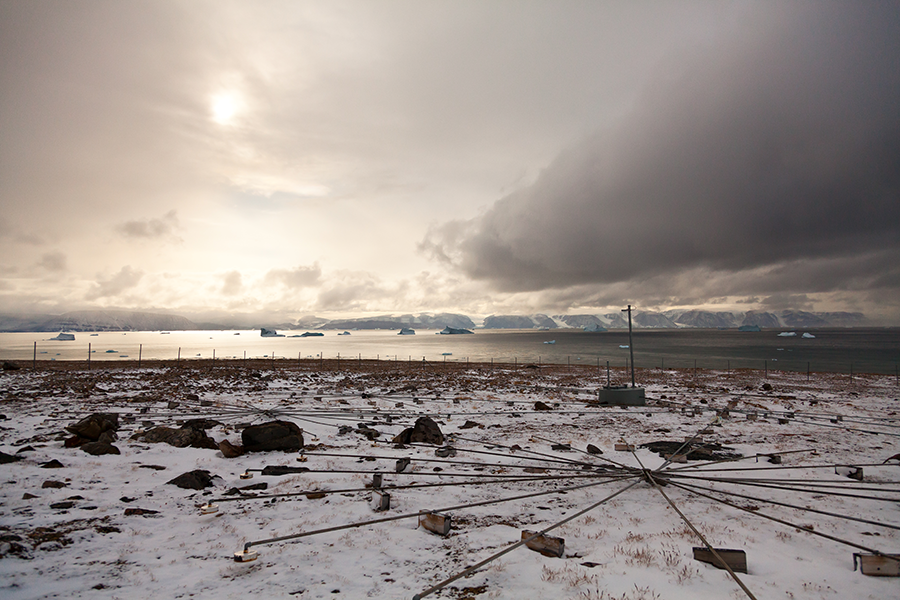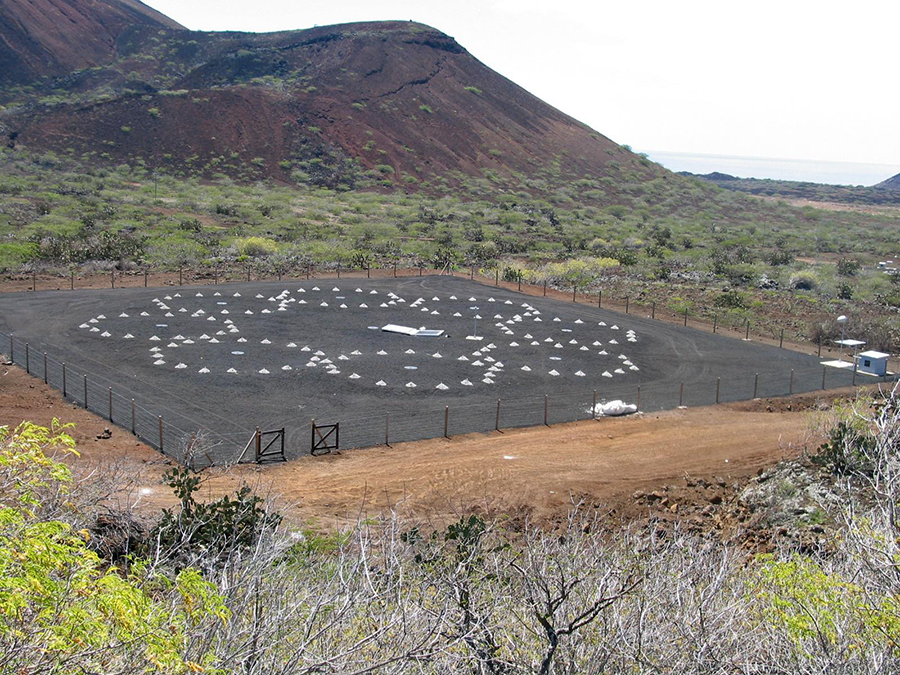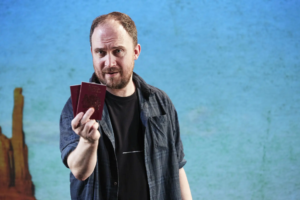For a treaty that has never formally entered into force, the Comprehensive Test Ban Treaty (CTBT) has a very good success record. It opened for signature on September 24, 1996, and has near-universal support, with 185 signatories, including the five original nuclear testing states. More importantly, no state except North Korea has conducted militarily significant nuclear test explosions in the last 23 years, and North Korea halted testing in 2017.
Robert Floyd took office as the fourth executive secretary of the Comprehensive Nuclear-Test-Ban Treaty Organization on Aug. 1. (Photo by CTBTO)Nevertheless, unless eight key states—China, Egypt, India, Iran, Israel, North Korea, Pakistan, and the United States—actually ratify the treaty, it cannot enter into force. That raises serious questions about the durability of the unofficial testing moratorium that nuclear-armed countries are currently observing and about the long-term future of the Preparatory Commission for the Comprehensive Nuclear-Test-Ban Treaty Organization (CTBTO) and its sophisticated global network of sensors that monitor for nuclear testing.
The person elected by CTBT member states to lead the organization into this uncertain future is Robert Floyd, the former director-general of the Australian Safeguards and Nonproliferation Office. He became the CTBTO’s fourth executive secretary in August. He spoke with Arms Control Association Executive Director Daryl G. Kimball on September 16 about the challenges ahead.
This interview has been edited for space and clarity.
ACT: This month marks the 25th anniversary of the opening for signature of the CTBT, made possible in part by the diplomatic leadership of Australia, your home country, back in the summer of 1996. Looking back over the last quarter century, give us your broad sense of what has been accomplished in terms of international security since then on nonproliferation and with respect to
the CTBTO.
Robert Floyd: The 25th anniversary and any anniversary, I think, is a really good time to look back at what has been done and take stock of that, as well as to review what has yet to be done. In the case of the CTBT, in the 25 years since its opening for signature, so much has been done, and this is at several different levels.
One level is that there is almost universal support for this treaty. We should never lose sight of that. We have 185 states out of 196 that have signed the treaty. We have 170 states that have ratified the treaty. Of those states that have not done so, the vast majority of them actually support the treaty, but there are two main classes of reasons as to why they may not have signed or ratified.
The first is actually bandwidth. It’s to do with how much legal drafting skills, et cetera, do they have available….
[M]any of those that haven’t completed [ratification] are the smaller and new countries. So, there’s a special case where I think more work can be done in support.
Then there’s another set of countries that have…their own circumstances which might limit their ability to take the decision politically now to either sign or ratify the treaty. Some of their considerations may well be more strategic than anything. So, all of that aside, the vast majority of countries support it, so that’s the first achievement.

Antarctica, Ascension Island, Greenland, and United Kingdom are just some of the 300 sites worldwide where the Comprehensive Nuclear-Test-Ban Organization has located its sensors to detect potential nuclear tests. This one is in Qaanaaq, Greenland. (Photo by CTBTO)The second achievement is that the treaty organization, the CTBTO, is responsible for establishing the verification mechanism so that it can be ready for when the treaty enters into force. That verification arrangement contains over 300 monitoring stations of what we call the International Monitoring System (IMS). It entails the International Data Centre (IDC), established here at the CTBTO, and the network of national data centers in various states. It entails developing on-site inspection protocols and approaches and the training of a cadre of would-be inspectors for any inspection which may be required by the verification regime of the treaty. The network is 90 percent complete, which is an amazing achievement.
This goes to your point about the accomplishments in terms of international security and nonproliferation, what we then have is something like a global norm that’s been established, a global norm against nuclear testing. Although we do not yet have a legally binding treaty—of course it has not entered into force due to eight of the states listed in Annex II having not yet ratified—we have a verification system under development that can demonstrate very clearly if there has been a nuclear test conducted anywhere, anytime… [B]efore the treaty was opened for signature, more than 2,000 tests had taken place. Since then, very few, and by very few states: India
and Pakistan late in the 1990s, and then the only state to test in the 21st century being North Korea. That to me is a story of great success.
ACT: Let me zero in on some of the challenges that you were alluding to. There are eight countries that have either not signed or ratified the treaty that are listed in the Article XIV provision on entry into force. What specifically do you plan to do to engage with those eight countries and to work with other friends of the CTBT countries to try to advance entry into force?
Floyd: The eight countries are an important focus of activity. My plan for engagement is that I want to meet with each of those eight countries individually, and I want to sit down with them to better understand three things: For five of the eight, when they signed this treaty, what were their considerations, and why did they sign the treaty? To understand their current context with regard to the treaty—their policy goals, situation, and natural disposition with regard to the treaty. Importantly, to explore with them scenarios as to how we can move from where we are now to where we want to be, where they would ratify.
That, to me, is a discussion I would want to have with each of those states to understand their individual history, journey, and possible scenarios to move forward. It would be presumptuous of me to be just writing the script for those meetings without actually meeting with the individuals that hold those responsibilities. I recognize, though, that the steps forward may not be so individual, the step forward well may be regional and coordinated in some ways in different parts of the world. Some would even suggest that it’s entirely global.
So, that’s how I would approach it, but let me put just one rider on that. Entry into force of the CTBT is a team sport. I have a part to play, and I take it very seriously. The CTBTO as an organization has a part to play, and we take it very seriously, but it’s actually a team sport of all those that love and appreciate the objectives of the CTBT. So, working with other state signatories, working with civil society, working with the youth—all of these are important avenues of engagement that we together could make a difference.
ACT: Speaking of one of the team players, so to speak, you met with some senior Biden administration officials here in Washington earlier this month. What was your basic message to the Biden administration about what it can do to advance the CTBT and to support the organization beyond rhetorical expressions? What can you share with us about what you might have heard back?
Floyd: Yes, of course I would not go into the greater details of discussions with members of the Biden administration, for which I am very thankful to have had some helpful discussions and to have had a good deal of their time. It is clear, everybody can see, that President [Joe] Biden and his administration are certainly keen about the CTBT. His history of involvement early on with the CTBT is well known. It’s also clear that the process for ratification is not just about the president’s wish, and so there are some practical challenges to seeing the treaty move to a point where a ratification might happen.
I am confident that if any opportunity arose for that to happen, then the opportunity would be seized, but that is for the judgment of the U.S. administration and the U.S. officials. So, I think that the discussion with the U.S. administration is not one that should be single dimensional. If it is unidimensional and it’s just about entry into force, then it’s too narrow a discussion. The discussion, to me, is to see a continuation of the great commitment that the United States has made across many administrations to support financially the CTBTO, both through regular assessed contributions, but also through some very generous extra contributions. We are deeply appreciative of that clear and very strong demonstration of support.
An additional demonstration of support has been the engagement of U.S. technical experts in areas of the processes, committees, and considerations and even technologies used by the CTBTO, and I would love to see that continue on. In addition, I would like to see strong political support by the U.S. administration in encouraging, even though this is slightly awkward, further ratifications moving toward universalization—ratifications and signatures with other states.
Obviously with the Nuclear Posture Review coming up, we would appreciate as strong and as forward-leaning language as can be produced to be put into that document. I would personally love to see that that would be stronger than has ever been used before in the Nuclear Posture Reviews of the past. All of these are things that the U.S. administration can do, could do, and would be good illustrations and demonstrations of their commitment to the treaty, even if delivering on ratification was not possible in the immediate term.

Infrasound Station IS50 on Ascension Island. (Photo by CTBTO)ACT: Speaking of some of the technical operations, you are the head of a large organization that has a global span, and one of your core missions is maintaining the IMS and the IDC. What do you see as some of the main challenges facing the organization, in particular, maintaining the funding necessary to keep the organization’s operations going? Is it more difficult to do so given the delay in the formal entry into force of the treaty?
Floyd: Yeah, the IMS and the IDC are the major cost centers of the CTBTO. The on-site inspection area should never be forgotten, it’s a very important part of the verification mechanism, but it certainly demands less of the budget than those other two areas.
ACT: That has not yet been implemented because on-site inspection can only be triggered with entry into force, correct?
Floyd: Absolutely. The preparation for approaches, protocols, handbooks, et cetera, and even the training of a possible cadre of inspectors are important preparatory activities, but nonetheless the cost of that is way less than the cost to set up the monitoring and the analysis and the data center part. It’s been estimated that the IMS and the IDC is about a $1 billion asset that has been invested in over the last 25 years. So, that is a very significant asset. When I look at the functioning of the IMS and the IDC, I see continuing improvement, continuing adding of stations, but I’ll give you what keeps me awake at night.
What keeps me awake at night is that a $1 billion asset needs to be serviced in terms of its depreciation….[T]his equipment needs to be sustained. There are repairs, maintenance, and replacement that need to be done. You need a significant financial commitment that should be continuing over every year and accumulating over years to be able to sustain a $1 billion asset such as this one, spread across some of the far reaches of the globe. That, to me, is the challenge. The normal operation of the agency through the goodwill and generosity of the state signatories is being covered even with the impact of COVID-19 on global and national economies, but this other aspect is yet to be worked through.
ACT: Let me ask you a question about the role of some of the former nuclear testing states, particularly the five permanent members of the UN Security Council, which happen to all have had nuclear testing programs. You will be attending a special meeting on September 27 on the CTBT, convened by Ireland. While there has been cooperation on the council in expressing support for the CTBT, there have also been some disagreements. I wanted to ask you to offer some thoughts about one of these issues.
As you’re aware, the United States has alleged that Russia has engaged in activities at its former test site that are inconsistent with the zero-yield prohibition established by the treaty. Russia has denied this charge. Has the United States presented or sought to present any evidence to the CTBTO or to member states about its concerns
about Russia’s activities so far?
Floyd: As far as I am aware, and I would never be fully aware of everything that the U.S. government would do, but as far as I’m aware, the United States has made, on a number of occasions, that declaration that you just mentioned. But I’m not aware of a sharing of more detailed information that might back that up.
ACT: The CTBT, when it was negotiated, was not really designed to operate indefinitely in the situation in which on-site inspections are not available, but that’s where we are. So, just a technical question: Does the treaty allow for states to discuss or explore confidence-building measures to supplement the formal system, and how might the CTBTO play a technical role in facilitating that if states-parties request it?
Floyd: Confidence-building measures are an important part of the treaty. They particularly are opportunities for states to give some explanation of any incidents or events that may occur in their jurisdiction which could end up being misread or misinterpreted in various ways. Sharing that information with other states is a helpful thing so that people don’t jump to wrong conclusions. This mechanism, building confidence, is an important one, and the application of that in a context that is pre-entry into force is a slightly different consideration as to how that would and could take place. At this point, this is all quite theoretical in that nothing has been brought to the CTBT for consideration by the [CTBTO]…. Until it is, we don’t have something to be responding to.
ACT: As you were saying at the outset, the test ban treaty has always been viewed as part of the global nuclear nonproliferation and disarmament architecture. As we all know, at some point if it’s not delayed once again, the nuclear Nonproliferation Treaty (NPT) states-parties will convene for the 10th review conference, and the CTBT has always been part of the NPT deliberation. What are you hoping that NPT states-parties agree to do with respect to the CTBT when they meet for this review conference, and how important do you think the treaty is with respect to the NPT, which is now more than 50 years old?
Floyd: Obviously, it’s kind of a significant review conference for the NPT. It’s slightly delayed, so it does coincide with their 50th anniversary and, for us with the CTBT, the 25th anniversary of opening for signature. My desire is that there would be some strong language in any document which is produced by the NPT review conference speaking about the importance of the CTBT and calling on all states yet to do so to sign and ratify so that the treaty can enter into force. The CTBT has a very important draw when it comes to fulfilling part of the NPT, and in the space of nonproliferation and disarmament, having an effective and verified ban on testing is an important element. Maybe in this coming 10th review conference, the work and the achievement of the CTBT is one of the things that states can point to that helps us in the space of ultimate disarmament. Moving to ultimate disarmament is not possible unless there is a testing ban and a verifiable testing ban to put that block in the pathway of the proliferation of weapons capability or the enhancement and development of new weapon types. So, I think that the CTBT and all it has achieved is the good news story…and its recognition in [the NPT] concluding document would be wonderful.
ACT: There is a new treaty that has come on the scene since 2017, the Treaty on the Prohibition of Nuclear Weapons (TPNW). How do you see the relationship between the TPNW and the CTBT? Does it reinforce the norm? Is this helpful for the CTBT regime as a whole? How do you personally view it?
Floyd: The TPNW is the latest element of the international nuclear architecture. The NPT is probably in many ways the centerpiece. The CTBT augments and delivers a part of that. There are many other treaties that are important, such as treaties on nuclear security like the Convention on the Physical Protection of Nuclear Material and its amendment, and there are nuclear-weapon-free-zone treaties. All of these have complementary roles. The TPNW is a part of that broad, international legal instrument landscape around nuclear weapons. My responsibility is clearly for one of those treaties, the CTBT, and its entry into force and the implementation of particularly the verification architecture associated with that. My goal is to work cooperatively with all of the other elements of the nuclear architecture.
ACT: To circle back to one of the things you mentioned at the top about the role of civil society, your predecessor, Lassina Zerbo, and his predecessors launched some key initiatives to engage civil society in the work of the CTBTO and the treaty. What is your plan, your view, about how such initiatives can help advance the CTBT regime?
Floyd: As I said early on, the role of civil society is very important. It’s not about governments alone, and governments reflect in democracies the will and the interest of people. Civil society, the media, all of these players have a part in this important social discourse. A couple of things that Dr. Zerbo did when he was executive secretary that I think were particularly important were the establishment of the CTBTO Youth Group, an initiative to engage the next generation of policymakers, maybe legislators, as well as the thinkers and academics of the next generation. I had the privilege to speak to the youth group on a video chat earlier this week. I had been so looking forward to it, and I was not let down. It was such a pleasure to meet with them and to hear their ideas, their enthusiasm, and their commitment. Sadly, the entry into force of this treaty is a multigenerational activity, and so the work of Dr. Zerbo to work with the young people to establish the youth group is particularly to be applauded. I would like to see how we make it even better. To review, to take stock, and to look at how we improve the effectiveness of the youth group, as well as its support for the CTBT and the CTBTO.
At the other end of the age spectrum, Dr. Zerbo established another group called the Group of Eminent Persons (GEM), and that is picking up on a number of people from different countries around the world that have had deep experience in issues related to nuclear policy and the establishment of the nuclear architecture. Engaging with these people to learn from their experiences and to also see them continue to be involved in influencing and shaping, I could see the logic of why that was also important, and I heard of the very positive experience when
GEM met the youth group and the generations were able to interact and learn from one another.
Again, using the wisdom and experience of elder statesmans is something I want to look at. How do we do that best, how do we harness all of that potential in the most effective way? Those are important initiatives and ones that I am wishing to understand better and look at how we enhance our effectiveness with both cohorts.




